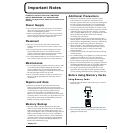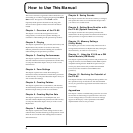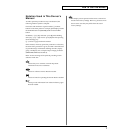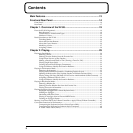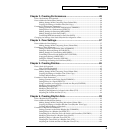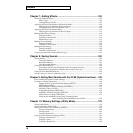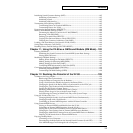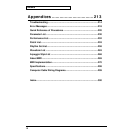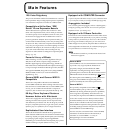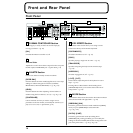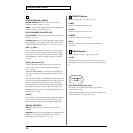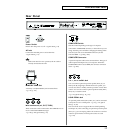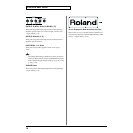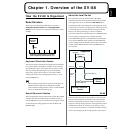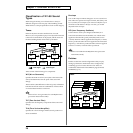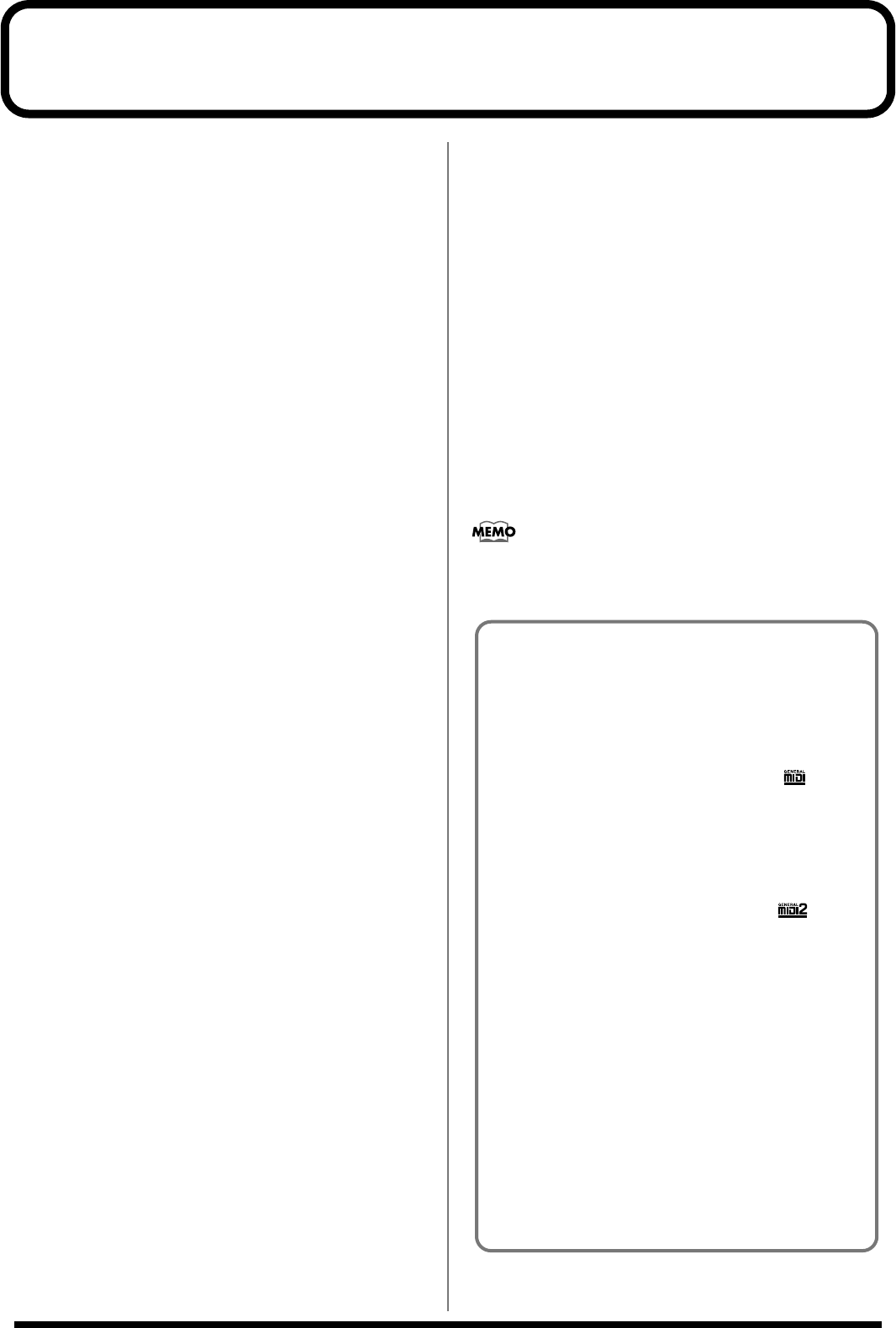
13
Main Features
128-Voice Polyphony
The previous maximum number of 64 simultaneous voices has
been expanded to 128, providing ample expression capabilities,
even with tones composed of a number of combined tones.
Compatible with the New “SRX
Series” Wave Expansion Boards
The XV-88 features two expansion slots for the new “SRX
Series” Wave Expansion boards, each of which provides the
waveform capacity of four “SR-JV80” boards. Of course, since
the XV-88 is also equipped with an additional two slots for
previous-generation “SR-JV80” Wave Expansion boards, you
can also install such boards that you now may be using in the
XV-88 as well. Thus, with a Wave Expansion board installed in
every slot, you can get massive waveforms equaling even those
obtainable with samplers, all of which are ready to use as soon
as you turn on the instrument, with no loading from any
sequencer or other external recording device required (
Quick
Start; p. 4, p. 10
).
Powerful Array of Effects
While including, of course, all of the algorithms of the JV-
2080, the XV-88’s effects comprise a huge collection of
Roland’s digital signal processing technology, 3D DELAY
that makes full use of RSS (Roland Sound Space technology),
Lo-Fi processing from Roland’s MC-505 groovebox, the SRV-
330’s popular REVERB, along with a newly designed RING
MODULATOR, and more, for a total of 63 different
algorithms (p. 117).
General MIDI- and General MIDI 2-
Compatible
The XV-88 is compatible with both General MIDI and
General MIDI 2 standards. When working with music data
that conforms to General MIDI and/or General MIDI 2 (GM
scores), you can combine the XV-88 with a computer or
sequencer, and use the XV-88 to play back the data (p. 192).
88-Key Piano Keyboard Features
Hammer Action with Aftertouch
The XV-88 is equipped with a full 88-key piano keyboard
utilizing a hammer action system for rich expressiveness,
with aftertouch provided as well. The XV-88 gives you both
the pure, unspoiled expression you get with a piano, and the
dynamic play of a synthesizer, all in a single instrument.
Sophisticated User Interface
The XV-88 also features the Roland XP-30’s popular Patch
Search function and Phrase Preview function. The Patch Finder
function (p. 30) lets you rapidly find the patch you want simply
by specifying a patch category. By pressing [PHRASE
PREVIEW], you can then hear the selected patch play a phrase
suitable for that type of patch (Phrase Preview, p. 32).
Equipped with COMPUTER Connector
A special computer cable makes it easy for you to connect the XV-88
to your computer, so that you can enjoy ensemble playing (p. 208).
Arpeggiator Included
You can easily perform arpeggios, and use “rhythm guitar,”
simply by pressing a few chords. You can even specify the
rhythmical “feel” you want (p. 41).
Equipped with D Beam Controller
The XV-88 also comes with the D Beam Controller which allows
you to change the sound dynamically as you perform, according
to the position of your hand as you move it over the controller.
By moving your hand above the panel, you can control even
subtle changes in tones, effects, and pitches that are difficult to
make using bender and aftertouch, all in realtime, bringing your
live performances to a whole new level (p. 45).
The D Beam Controller is provided under license from
Interactive Light, Inc.
General MIDI
General MIDI is a set of recommendations which seeks
to provide a way to go beyond the limitations of
proprietary designs, and standardize the MIDI
capabilities of sound generating devices. Sound
generating devices and music files that meet the General
MIDI standard bear the General MIDI logo ( ). Music
files bearing the General MIDI logo can be played back
using any General MIDI sound generating unit to
produce essentially the same musical performance.
General MIDI 2
The upwardly compatible General MIDI 2 ( )
recommendations pick up where the original General
MIDI left off, offering enhanced expressive capabilities,
and even greater compatibility. Issues that were not
covered by the original General MIDI recommendations,
such as how sounds are to be edited, and how effects
should be handled, have now been precisely defined.
Moreover, the available sounds have been expanded.
General MIDI 2 compliant sound generators are capable
of reliably playing back music files that carry either the
General MIDI or General MIDI 2 logo.
In some cases, the conventional form of General MIDI,
which does not include the new enhancements, is
referred to as “General MIDI 1” as a way of
distinguishing it from General MIDI 2.



